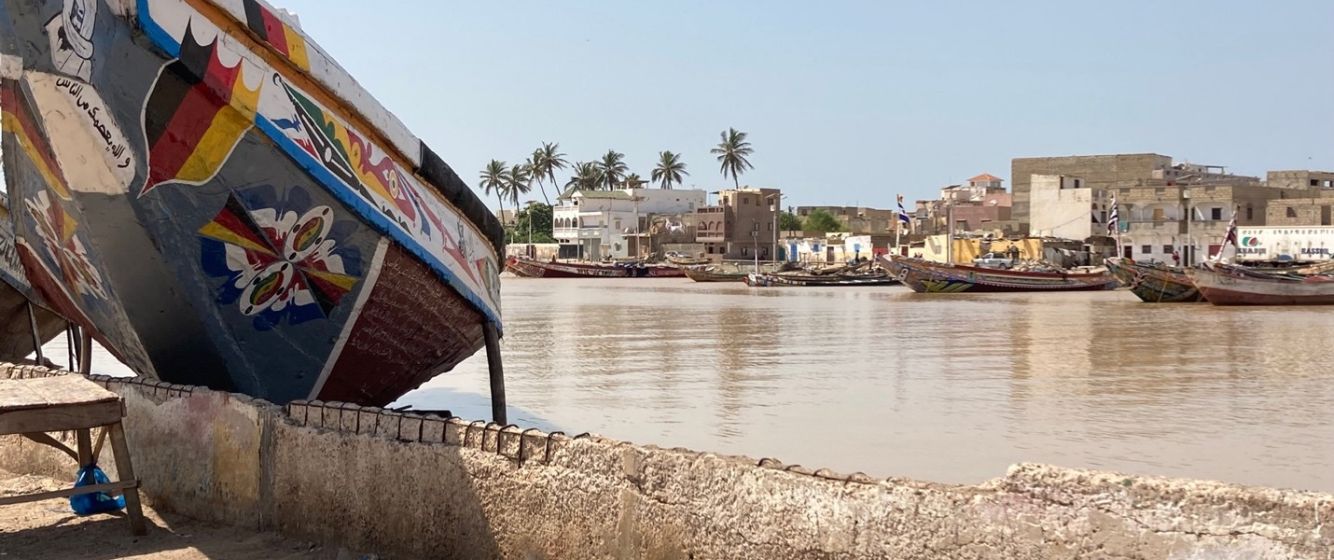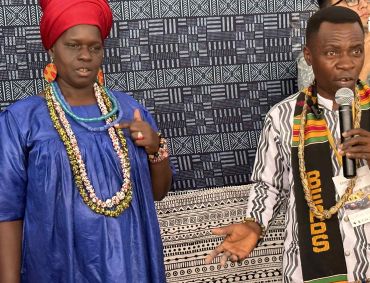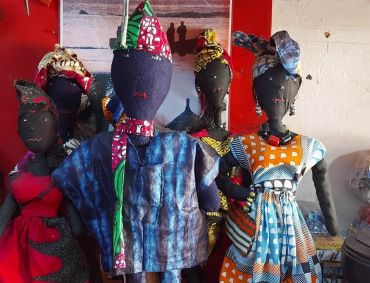
One of the beautifully painted fishing boats in the city of Nda (Saint Louis), a constant reminder of the creative genius of Senegalese craftspeople during the workshop visits.
Photo Credit: Genner Llanes Ortiz, Saint Louis, Senegal (2022)
Resourceful crafting & decolonizing
In this blog piece on the Craft as Method workshop in Saint Louis, Senegal, HAB partner Genner Llanes Ortiz (Bishop's University, Canada) reflects on his time in the workshop, interacting with West African craft practitioners and thinking on how their experiences inspired new paths of learning in the Mexican context.
Coming all the way from Canada, my Indigenous Mexican self was excited to be for the first time in Western Africa. There I experienced a fascinating, combined feeling of familiarity and strangeness. This was the effect of finding so many faces and rhythms of Senegal reminding me ever so strongly of the Caribbean region, which I grew up very close to in Mexico.
The first day of the Craft as Method workshop at Saint Louis brought us into contact and stimulating conversation with master craft makers from Senegal and Ghana working with clay, glass, indigo, tin, paint and cotton, such as Évelyne Bassène, Ebenezer Djaba Nomoda, Soxna, Bino and Mohammed Mudasir Tijani. The knowledge displayed during these encounters mobilized global and sometimes ancient stories of exchange that connected multiple times and peoples. This was for me a steep learning curve since the history of Western Africa and its multiple links to the world are seldom taught in the Mexican context. Several interventions during the second day of the workshop further stimulated my thinking about craft and connecting it with new paths for learning. Badji Baba made me consider how poetry can be understood as an archive which records feelings, in the same way objects are containers of story. Mohomodou Houssouba introduced the idea of translation as a craft, a thought that seems now even more relevant considering recent and scandalous developments in Artificial Intelligence (think ChatGPT). What Mohomodu draws our attention to is the need of defending translation as a form of artisanal labour (just as the other artistic manual crafts that we explored the day before). Abdourahmane Seck further asked whether craft could not be a method, a path, to escape or contain the most damning effects of the Anthroposcene.
These and other similarly inspiring interventions by colleagues from Mali, Senegal, Ghana, India, Taiwan, Singapore, the USA, and the Netherlands, among other regions, expanded my understanding of craft as more than manual artistry. After all, manual skill often deals with irregular materials, diverse timescales, and unpredictable outcomes, that yield unique products. In this way, we can think of craft is thus the opposite of mechanistic, and even industrial standardisation, a quality on which its sense of beauty is founded. It is also because craft making is imbued with this historicity, ie, its uniqueness, that it seems so useful to unpack global history through the study of crafts in their specific contexts.
At the same time, “crafting” – as a verb – could be a productive way of rethinking human resourcefulness in the face of new global challenges and opportunities. By this I mean, that “crafting” could be used to describe the capacity of human communities to deal with the “irregular” or the “atypical”, that is, the opposite of industrial uniformity and supposed predictability. In my current research on digital indigeneities, this is just an aspect of Indigenous practice that I seek to highlight, namely, the unsuspected uses of digital equipment and technologies by Indigenous groups and individuals. Since digital devices and applications are not conventionally designed to meet the needs of marginalised communities, the appropriation of these by said peoples requires (and repeatedly shows) experimentation, invention, and adaptation. This entails the remodelling and “crafting” of unforeseen ways of revamping the potential benefits of digitality to meet the demands of neglected sections of society.
Further to this, it was thought-provoking to look at “decolonising” also as a craft based on reclamation and experimentation. The method is to escape from the cage of coloniality, which imposes, for instance, written knowledge over embodiment and performativity, or classroom dynamics over convivial learning, or fixed definitions over creative, dynamic translations. We, as a network, must continue experimenting with “decolonising” strategies in the knowledge that not every solution will necessarily work for everybody. In this sense, decoloniality has of course need to be crafted; it cannot simply be rushed or industrially manufactured.
These insights were the most important take-aways for me from the workshop. I thank the Senegalese hosts, Critical Action and Study Group (GAEC-Africa) and the University Gaston Berger, as well as the Humanities Across Borders (HAB) program of the International Institute for Asian Studies (IIAS) at Leiden University, for creating this learning opportunity.


